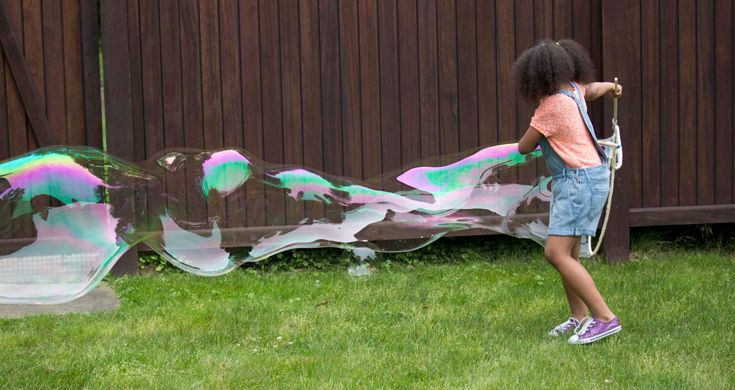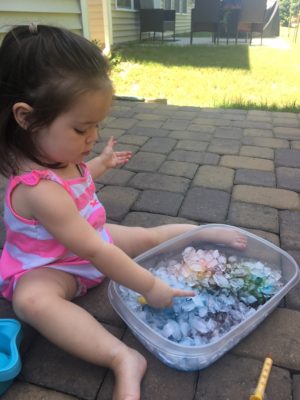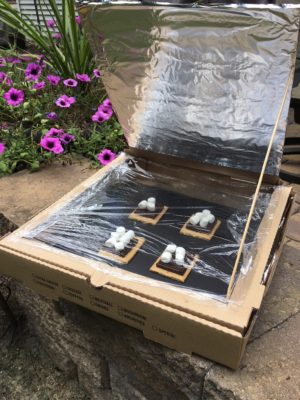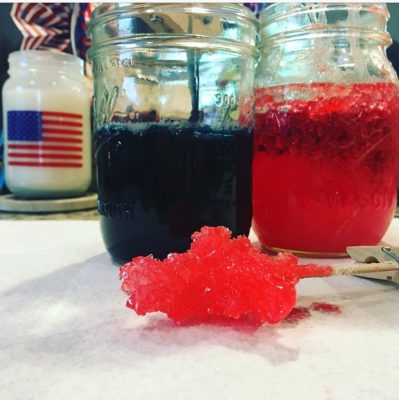Let’s try an experiment. I hypothesize that if we concentrate on strengthening learning lessons in the summer months, then we will boost our student’s success in the upcoming school year. In this series, Summer Enrichment Activities, we’re helping support your efforts to teach your students throughout the summer and close the summer learning gap.
Test our theory this summer with these five cool summer science experiments, and watch your research generate positive results.
1. Fizzy Ice
Fizzy ice is an easy activity that will capture your child’s attention. Pack crushed ice over baking soda mounds, and drop mixtures of vinegar and food coloring on top. Watch the reactions of your students and the ice as the color combinations come to life! Chat with them about the reaction between the baking soda and vinegar in which a bicarbonate (baking soda) and an acetic acid (vinegar) produce carbon dioxide. You can even practice with a periodic table activity and break down each element, and practice learning the different names, symbols, and more.
2. Giant Bubbles
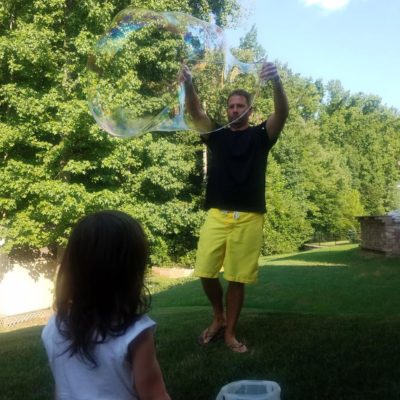
Ingredients:
six cups water
1/2 cup dish soap
1/2 cup corn starch
1 tbsp baking powder
1 tbsp Glycerine
Start by dissolving the cornstarch in the water, then stir in the remaining ingredients gently so you don’t create a lot of bubbles. Allow the mixture to sit for at least an hour, stirring occasionally when you see the cornstarch settling to the bottom. While you wait, you can create your own bubble wand! Take two drinking straws, and a length of yarn that is 6 to 8 times longer than the length of one straw, thread the yarn through the straws, pull into a circle, tie a knot, and you’re good to go! The more you play with the bubble formula, the silkier it becomes, so don’t get discouraged if the first few tries aren’t an immediate success. Works best on a cloudy, overcast day.
3. Solar Oven
Science experiments offer a perfect opportunity to teach cause-and-effect. Even if your student is too young to understand the “science” behind it all, they’re fun nonetheless! Take the solar oven, for example. I don’t think my little learner grasped the fact that the sun was producing the heat that was then reflected on the aluminum foil, and contained by the plastic wrap, but she loved the end result of a s’mores snack! You’ll need a pizza box, aluminum foil, box cutter, permanent marker, ruler, glue, plastic cling wrap, black construction paper, and tape. Not a fan of s’mores? Get creative and try something else in your new solar oven!
4. Rock Candy
What’s more fun than making rock candy? Seeing the excitement in your student’s eyes as they create and learn! You will work as a team to combine the ingredients which will ultimately produce a supersaturated solution. What is a supersaturated solution? It’s when there’s more solute (in this case, sugar) than will dissolve into the liquid. The sugar then comes out of the solution through a precipitation process. As time passes, the water will evaporate slowly from the solution which, in turn, makes it even more saturated. This process ultimately causes the seed crystals to collect on the string, and the rock candy to grow molecule by molecule. Your finished rock candy will be made up of about a quadrillion (1,000,000,000,000,000) molecules. Neat, huh?
5. Rain Cloud in a Jar
You can learn a lot about weather in the summer no matter where you live. You can take time to discuss the heightened temperatures and ways to avoid heat exhaustion or explore weather by playing a learning activity that teaches students about wind, precipitation, cloud coverage, and more. You can also prepare for being cooped up in the house with some rainy day activities. This rain cloud in a jar experiment is a great way to visually illustrate weather inside or outside with your students. Simply fill a glass 3/4 full with water, add shaving cream to the surface so that it resembles a cloud, and wait a minute for it to settle. Finally, use droppers to drip food coloring mixed with a little bit of water into the top of the “cloud.” As the cloud fills with water it will become over-saturated causing it to rain inside the jar. How cool!
How are you keeping your kids learning this summer? Share your ideas with us in the comments.
